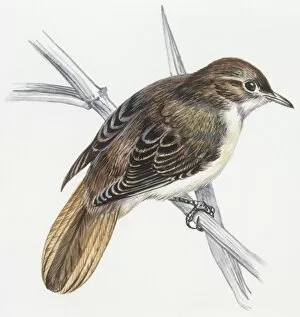Locustella Luscinioides Collection
The Savi's Warbler, scientifically known as Locustella luscinioides
All Professionally Made to Order for Quick Shipping
The Savi's Warbler, scientifically known as Locustella luscinioides, is a fascinating bird that captivates nature enthusiasts with its unique characteristics and behavior. Found in various regions including Hungary, the Netherlands, and Italy, this species has become a subject of interest for naturalists worldwide. With its distinct appearance and melodic song, the Savi's Warbler stands out among other birds in its habitat. Often spotted perched on reed stems or hidden within dense reedbeds, it showcases remarkable adaptability to marshy environments. Its slender body and cryptic plumage allow it to blend seamlessly into the surrounding vegetation. One of the most captivating sights is witnessing a Savi's Warbler singing on a reed stem. As it melodiously serenades its surroundings, its enchanting notes fill the air with an ethereal melody. This mesmerizing display not only serves as a territorial call but also attracts potential mates during breeding season. Observing these warblers in action provides insight into their feeding habits as well. With nimble precision, they snatch insects from mid-air or pluck them off nearby foliage while hopping between reeds. The sight of a Savi's Warbler clutching food in its beak exemplifies their resourcefulness and ability to thrive amidst challenging conditions. Although relatively small in size compared to other avian species, the significance of the Savi's Warbler cannot be underestimated when considering biodiversity conservation efforts. Their presence indicates healthy wetland ecosystems where they play vital roles by controlling insect populations and contributing to pollination processes. Whether encountered in Hungary or Italy or heard singing joyfully across Dutch landscapes, encountering a Savi's Warbler offers an opportunity for birdwatchers to appreciate nature’s wonders up close. These sightings remind us of our responsibility to protect their habitats so that future generations can continue marveling at these beautiful creatures' resilience and grace.






